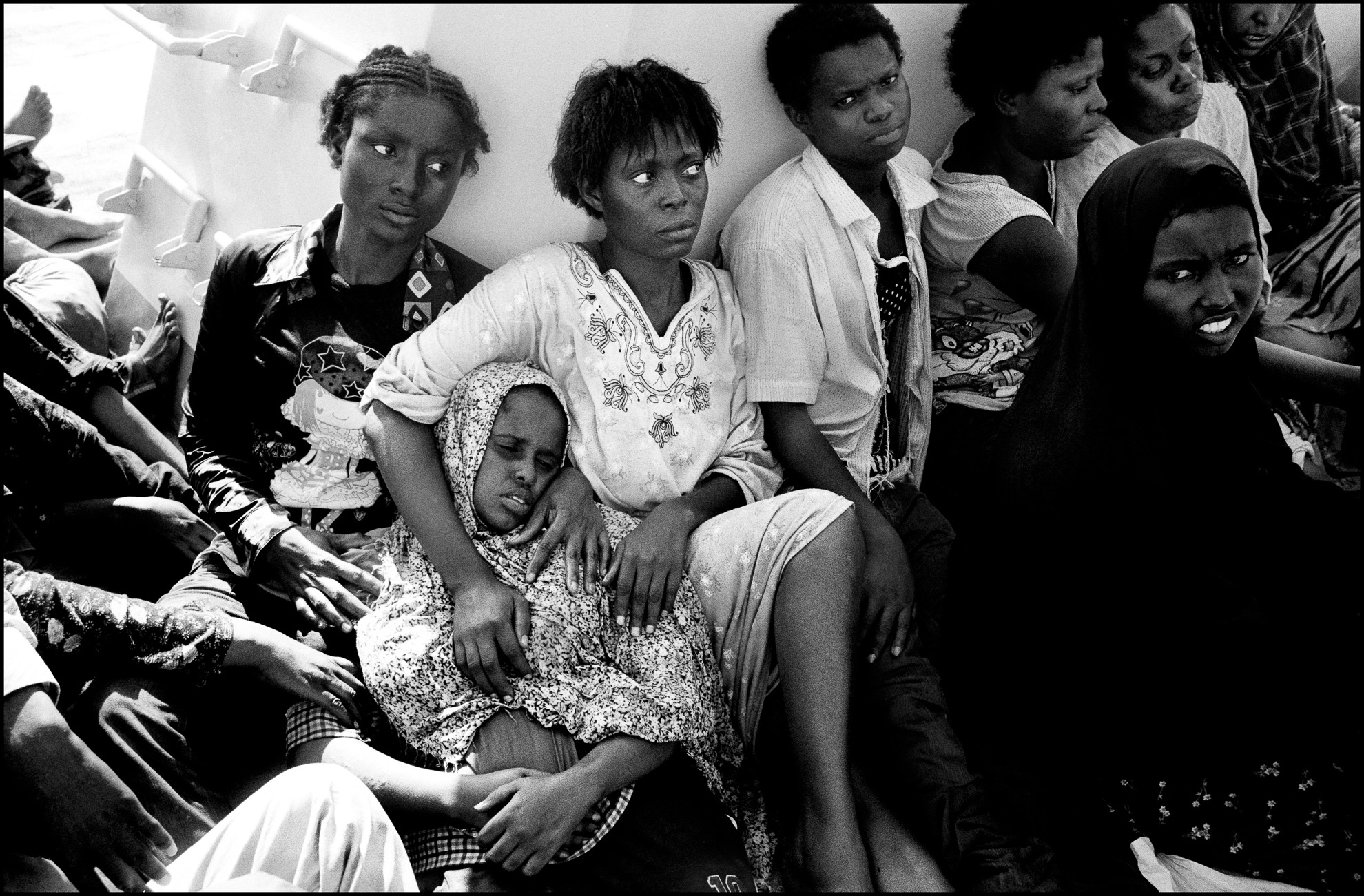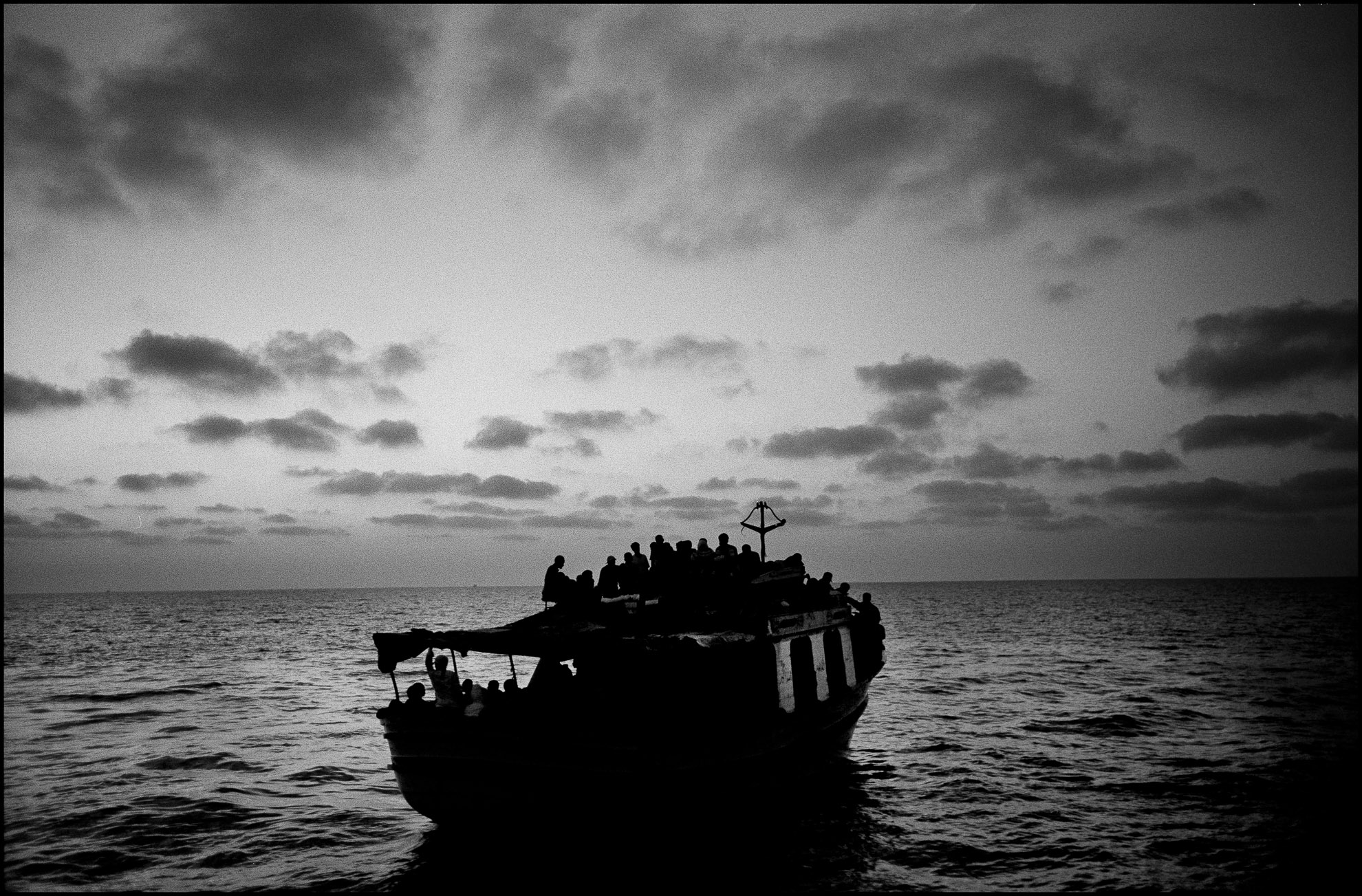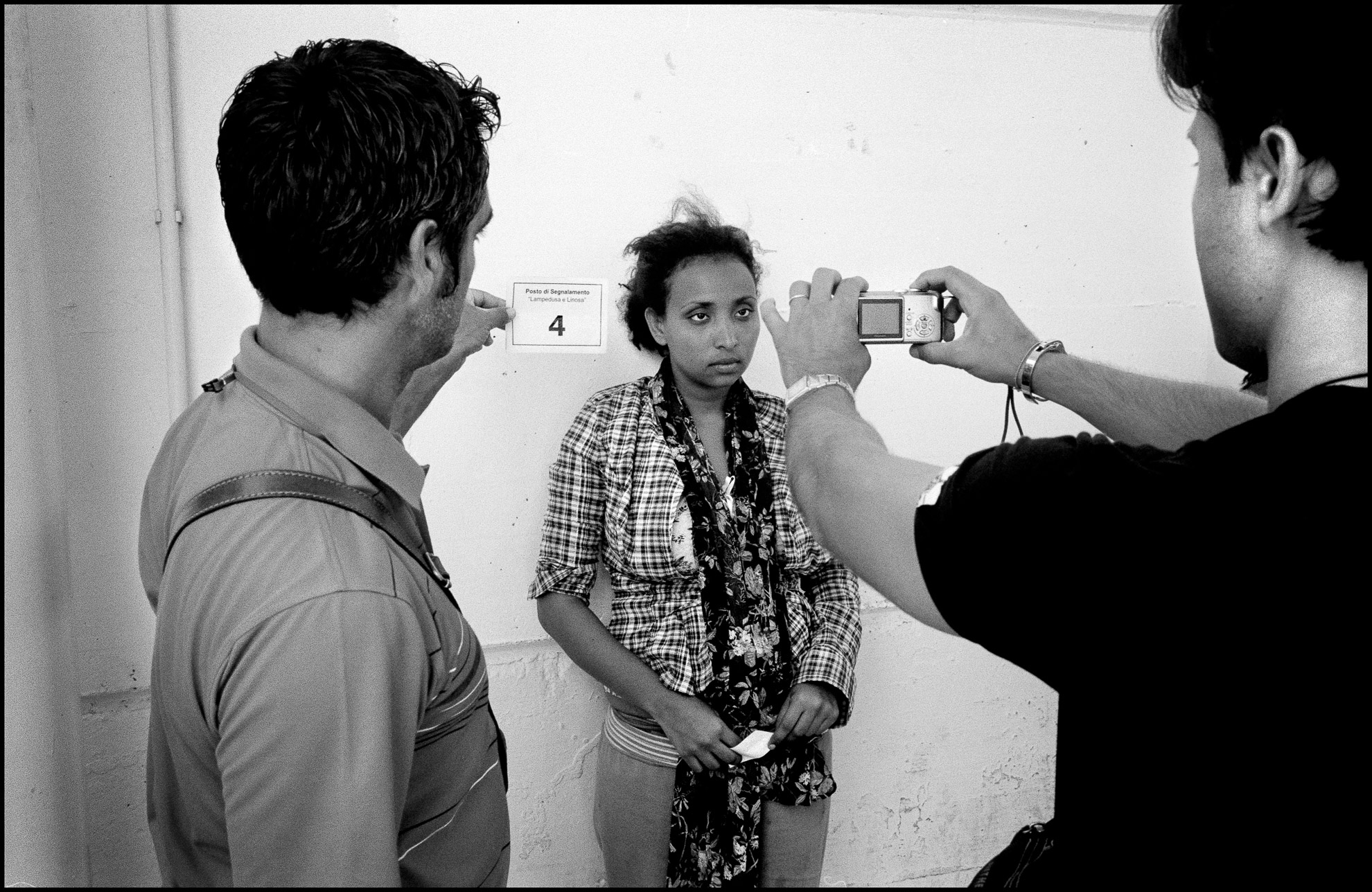Presentation
During August 2008, especially given the fine weather and calm sea, over 1,500 people, coming from Libyan shores, landed in Lampedusa, and were stored in the island’s refugee camp only big enough to hold 850: this is a humanitarian emergency.
Biography
Born in Toulon, France, he started his activity in Turin as a cameraman, producing some political and social reports. In 1975 he began to devote himself to photography, working in the streets and squares of protest, and in 1977 he moved to Paris. From there he began his travels as a reporter-photographer, first with French agencies, then on behalf of American agencies and international magazines (Newsweek, Der Siegel, Time, The New York Times), for which he "covers" crisis and conflict situations in Latin America, Africa, the Balkans, the Middle East.
In 1992 he won the World Press Photo Award (in the category Daily Life, stories) for a report on a cholera epidemic in Peru and in 1999 he won an honorable mention in the same competition for a report on Kosovo. At the same time, he began working on long-term projects: "El Rumore de Los Sabres" (1986-1988), his first project and book, documents Chilean society during the last two years of the military dictatorship of General Augusto Pinochet. Subsequently, he turned more and more to personal documentation projects that allowed him to tackle history in a more articulated way and less conditioned by the needs and requests of the weekly newspapers, as in the reportage that traces the path of the slave trade from Benin to the sugar cane. sugar plantations of the Dominican Republic and Haiti, or the three diseases that plague third-world countries - AIDS, malaria, and tuberculosis - were produced in the 1990s and 2000s.
Since 2000 he has been an associate member of the German photo news agency Zeitenspiegen Reportagen, for which he works on a project on the borders of the Mediterranean and the Middle East.






